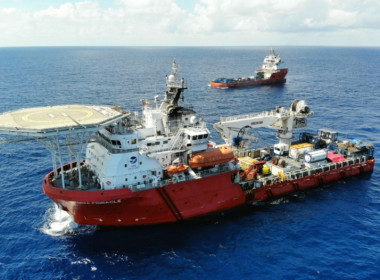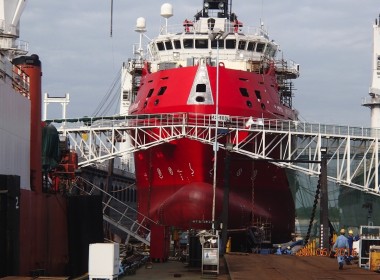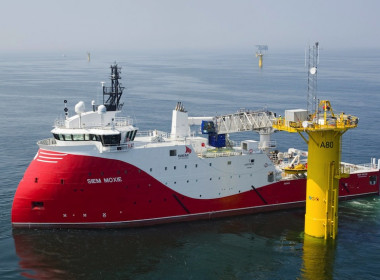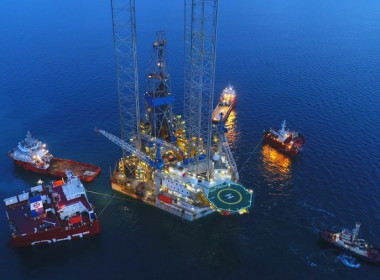COLUMN | The wheels on the bus fall off? James Fisher and The Metals Company [Offshore Accounts]

The wheels on the bus go round and round. Until they fall off.
James Fisher and Sons’ share price now languishes below where it stood at the start of 2013, an eight-year low. Since we asked whether there was “something fishy at James Fisher” in January 2020 (here), the shares have fallen from £20 (US$27.43) apiece to less than £8 (US$10.97).
Pity the charitable foundation set up in the name of the company’s former chairman Sir John Fisher, which increased its shareholding from 17.5 per cent of the company to 22.5 per cent in the first half of 2020, as we highlighted here. Now a third of their new investment capital is gone in the space of just over a year, and there’s a paper loss of around £10 million (US$13.7 million) on the extra five per cent of the company the trustees unwisely decided to buy.
The CFO bailed
Ominously, in March, Fisher’s long-time CFO Stuart Kilpatrick announced his resignation after ten years in the role, and left with a month’s notice, saying he was looking ahead to future opportunities. He received a lavish recommendation from CEO Eoghan O’Lionaird on Linkedin. His boss wrote publicly that the CFO had done “a great job, growing James Fisher’s profits by double digit, year on year, over a ten-year period.”
Until suddenly, he didn’t.
The results are out
The company’s half yearly results were announced ten days back (here). On paper, Fisher reported a statutory operating profit before tax for January to June 2021 that was actually up 14 per cent compared to the first six months of 2020, rising from around £7 million to £8 million (US$9.75 million to US$11.1 million). Well done!
The senior management attempted to demonstrate their faith in the company on September 14, with the chairman, chief executive and the new CFO all investing around US$60,000 each on that same day to buy five thousand Fisher shares at around 860 pence (US$11.80) each. That failed to reverse the stock price slump, unfortunately.
Many of us had assumed that the worst of the bad news was already over. In 2020 the company had taken a massive write-down on the value of the two dive support vessels (DSVs) that it had bought for its Subtech diving division, driving the parent company to a loss after a total impairment of close to US$100 million. On July 1, Fisher announced the sale of the DSV Paladin for US$17.3 million to Seamec of India, and told investors that the cash was received on or before June 30th in its interim report.
Swordfish also on the block
The second Fisher DSV, Swordfish, is being touted for sale on a “sale and leaseback” basis by a British shipbroker, so that Fisher will sell the vessel, but then charter it back from the buyers to use in its diving projects.
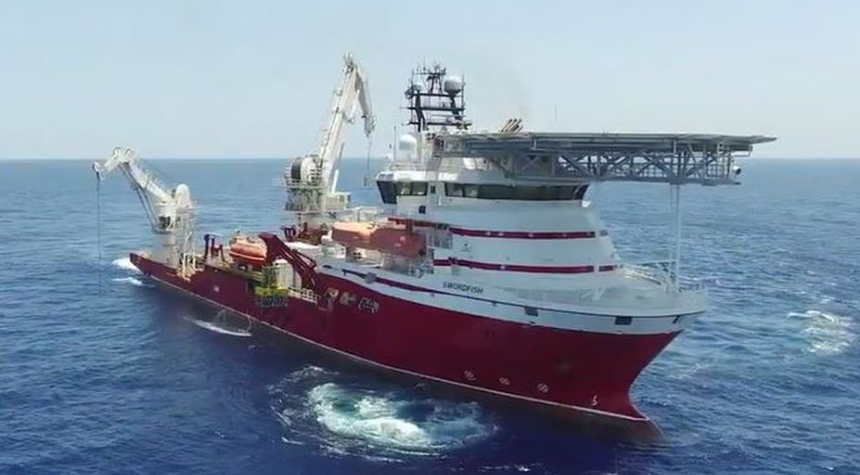
I think Fisher has realised that to compete for diving business offshore, the company might actually need a DSV from which to perform the work. Note 13 of the interim accounts shows that Fisher values Swordfish at £10.5 million (US$14.4 million) in its books. Readers will recall that sale and leasebacks were a speciality of Bourbon in its heyday (Reuters article here) and of Emas Offshore. Since both these companies went bust, they aren’t very good precedents.
The company announced that the Paladin sale was “in line with the group’s newly stated capital allocation policy to reduce leverage, in the short term, through the sale of non-core assets.”
Unfortunately, competing in the diving space against private companies like the mysterious Ultra Deep Solutions, now operating four large DSVs internationally, plus Ultra Deep Matisse seemingly waiting for delivery from the yard in China, and against big publicly-listed players like Subsea 7 and Boskalis, will be difficult for Fisher with just a single vessel.
The dive market has been merciless to smaller companies like Hallin (which went bankrupt and was liquidated in 2015) and Rever Offshore (which was acquired by Boskalis for a song in January of this year). Globally, the diving players are bumping along around break-even. Mermaid Maritime of Thailand reported a small loss for the second quarter, but managed to generate operating cash flow from its three working DSVs in the second quarter (see here).
What went wrong?
Whilst markets are fickle, the results show why investors are skittish on Fisher after its decade-long run of success.
Firstly, the company announced it was abolishing its interim dividend. Rather than getting eight pence a share, as they did in 2020, the shareholders, including the foundation, now get nothing.
Secondly, despite writing down the value of Paladin, and then selling it for cash in June, the company’s debts went up from £198 million (US$272 million) on January 1 to £211 million (US$290 million) on June 30.
The property, plant and equipment owned by the company is now worth much less than the company’s debt, falling to £127 million (US$174 million) on June 30.
The cash dried up
Worse, the accounts show that Fisher was no longer a cash-generating powerhouse in the first six months of 2021.
Rather, its operations burnt close to US$2 million from January to June of this year, whereas in the same period of the year before, when the world was reeling from Covid, Fisher’s operating cash flow was over US$80 million, and over US$100 million for the entire year of 2020.
With no cash coming in, and with its borrowings increasing, no wonder Fisher cannot pay its shareholders a dividend. So, Fisher finds itself in the odd position of generating statutory profits but not actually generating any cash from its operations.
Fisher Pelican – an omen?
If this continues in the next year, the company will be in a bind. This just may be a temporary problem caused by project work that has been performed but has not yet been invoiced due to billing milestones not yet being met.
Unfortunately, Fisher has traditionally been a serial acquirer, buying other companies and bolting on acquisition after acquisition. Without free cash flow, this becomes harder, and in the first half of the year Fisher spent less than US$1 million on acquisitions, down from over US$5 million a year before.
Now that its operating cash flow has turned negative, Fisher is increasingly resorting to bareboat charters and leases to expand its business, at significant extra cost.
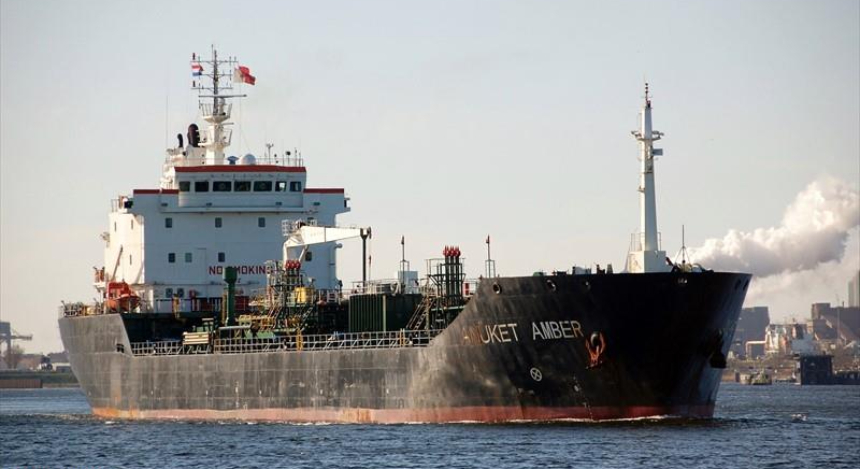
In August, First Ship Lease Trust of Singapore announced it had secured an eight-year bareboat charter from Fisher for the 9,600DWT product tanker Anuket Amber (here), worth US$1 million a year. But First Ship Lease didn’t own the 2008-built tanker. Instead it bought it for the contract for US$5 million, giving it a nine per cent raw return on the US$8 million in bareboat revenues it receives, plus any residual scrap value on the ship, which will be renamed Fisher Pelican.
There’s a point where taking on high cost liabilities, like these long-term bareboat charters, further impacts cash flow and creates a negative cycle.
Let’s hope for the sake of the John Fisher Foundation that the company pulls through.
The Metals Company finally lists
One of the beauties of Fisher being a public listed company is the transparency this affords. Disclosure is a burden on companies, but a blessing for investors and writers. So, with great joy we can confirm that DeepGreen Metals, the seafloor polymetallic nodule mining company, and Sustainable Opportunities Acquisition Corporation (SOAC), the special purpose acquisition company, finally completed their merger on September 9, bringing together SOAC’s raw cash and DeepGreen’s Pacific Ocean mining licences to create The Metals Company.
SOAC shareholders approved the transaction at an extraordinary general meeting held on September 3 and the transaction was completed on September 9. The combined company operates as The Metals Company and its shares began trading on the Nasdaq Global Select Market under the new ticker symbols “TMC” on September 10.
Gerard Barron, Chairman and CEO of The Metals Company, sent out a press release highlighting the incredible opportunity this affords his company.
“Public listing and access to public capital markets is an important milestone in our mission to solve the raw materials challenges of the clean energy transition,” wrote Mr Barron. “I want to give a heartfelt welcome to our new investors who participated in this transaction and thank our existing partners and investors who continue to support our important mission and our evolution from DeepGreen to The Metals Company.”
What’s missing? The IUCN moratorium vote
There was a strange omission from the release – a regulatory risk that the new investors might want to consider. A few days before the Nasdaq listing was announced, the IUCN World Conservation Congress meeting of civil society and governments announced resounding support for a moratorium on subsea mining after a vote (here).
The resolution called for “polluter pays principles” to be applied to seabed mining of the type that The Metals Company wishes to pursue, and delegates demanded wholesale reform of the International Seabed Authority, the international body that sold the subsea mining licences in international waters that The Metals Company (and others) hold. The ISA has always claimed it acts with the best interests of the whole of humanity at heart.
Now the IUCN has thrown down the gauntlet for the ISA to improve its governance and transparency and to resolve the conflict of interest that lies at the heart of its regulation: that as a regulator it benefits financially from the industry it regulates.
In the short term, the IUCN calls for all subsea mining projects to be suspended. Mr Barron now finds himself and his company at the eye of a growing environmental protest movement. The recent cull of over 1,400 dolphins in the Faroe Islands in a single day (here) is galvanising action to protect marine environments, and winning a new generation of supporters to charities like Sea Shepherd and Greenpeace.
Stricter rules apply on the Nasdaq
We have already covered the optimistic projections and incredible forecasts that the company made prior to the merger with SOAC here and here. Now that it is a public-listed company, much stronger disclosure requirements apply to The Metals Company. Hockey stick graphs of estimated future earnings and wild-eyed forecasts of huge profits in 2030 are not permitted to listed companies.
Bring it on, we say. Nothing like the fine print of a stock exchange disclosure to show the real state of a business, as we have shown with Fisher. For now, flush with SOAC’s cash, The Metals Company and its management are riding high on a wave of optimism. Good luck to them.
Background reading
The full IUCN subsea mining moratorium resolution is here.


